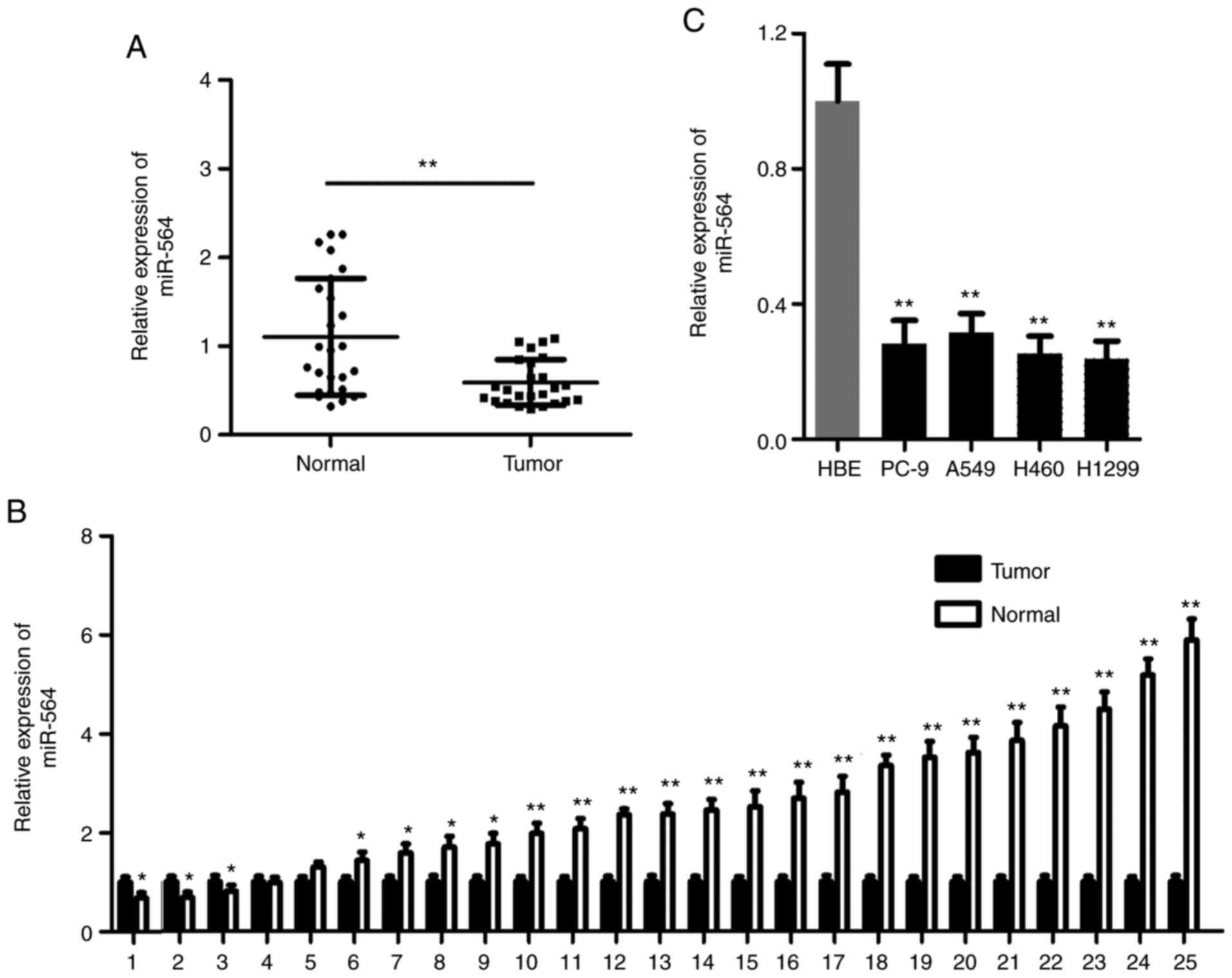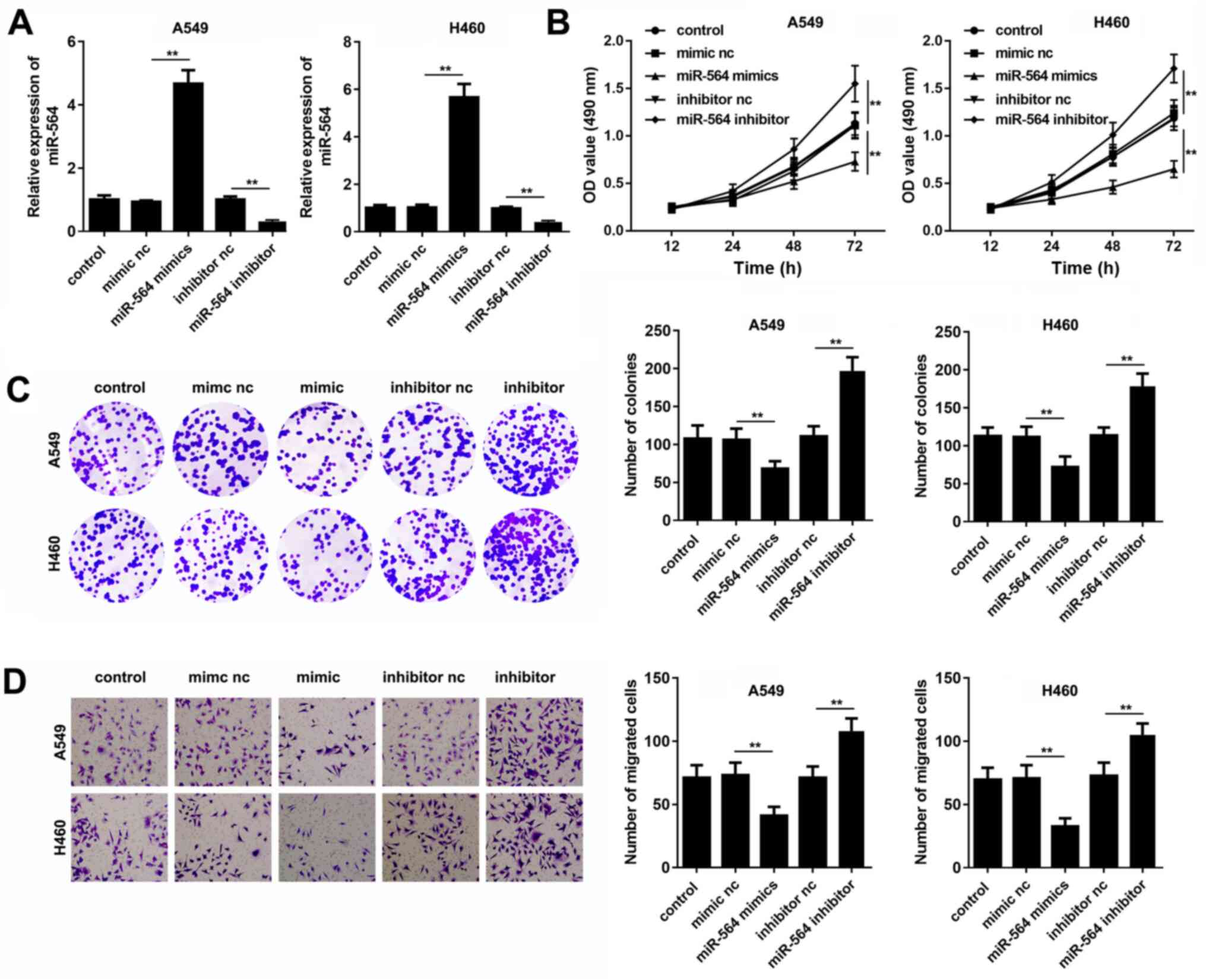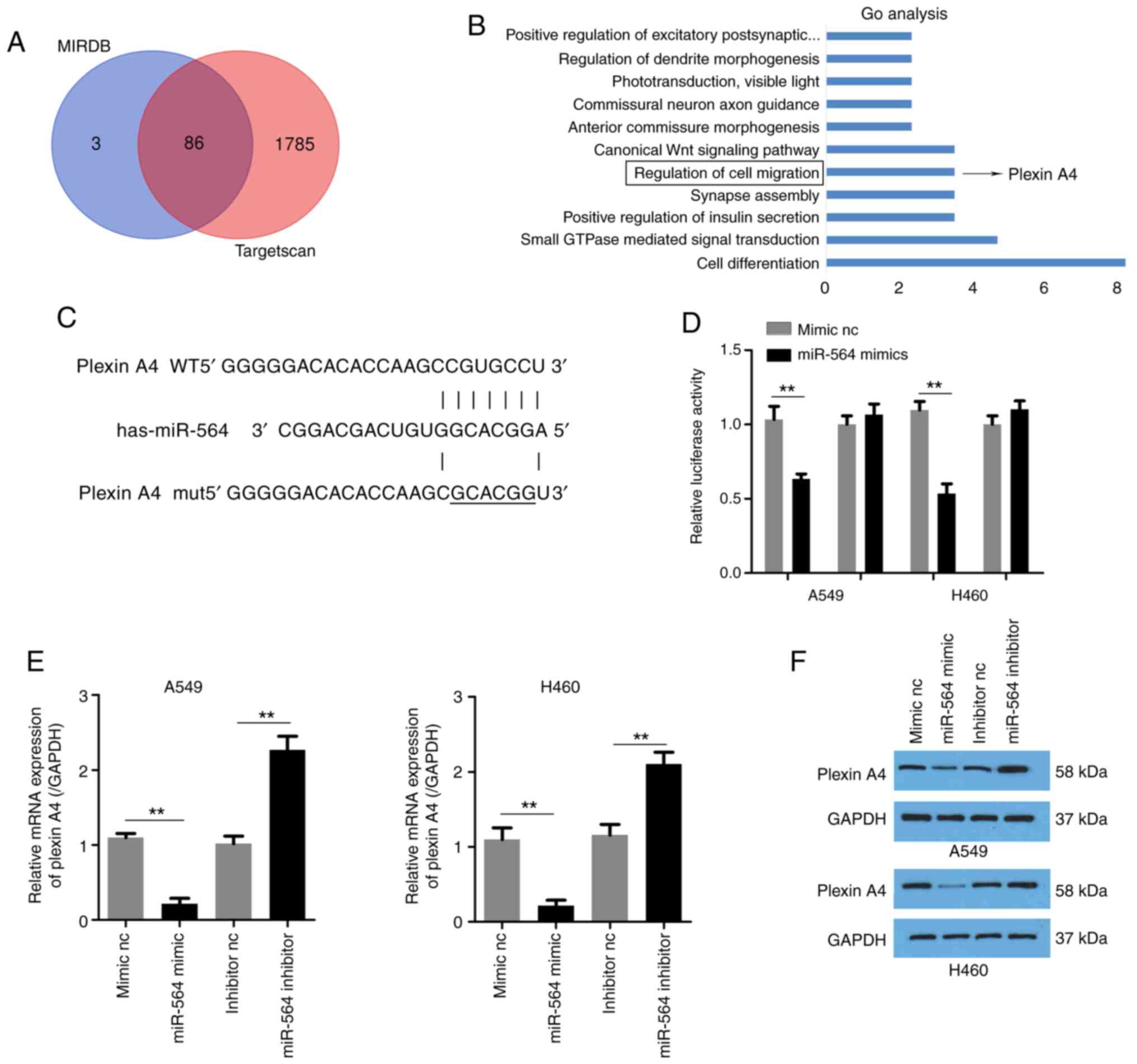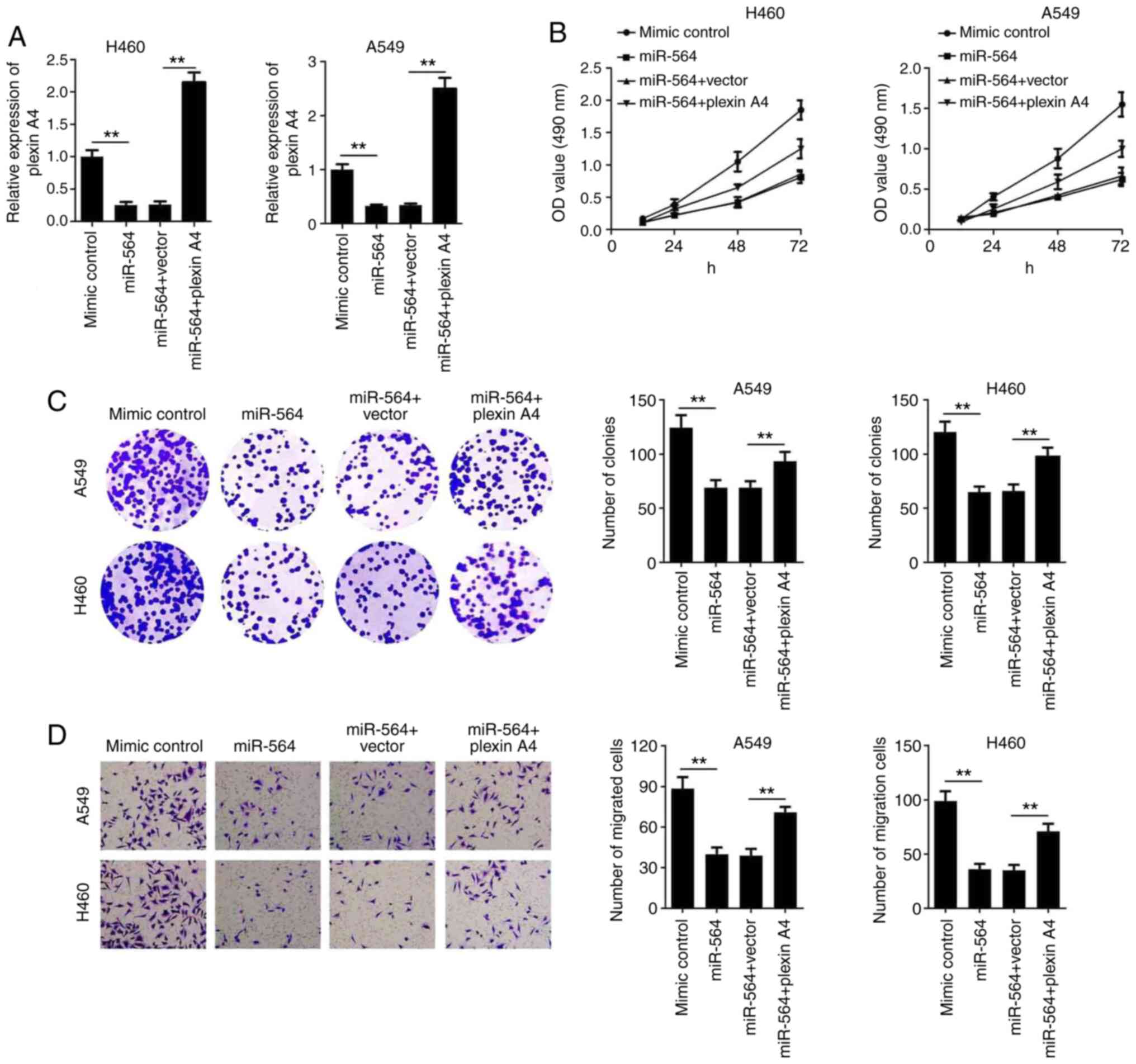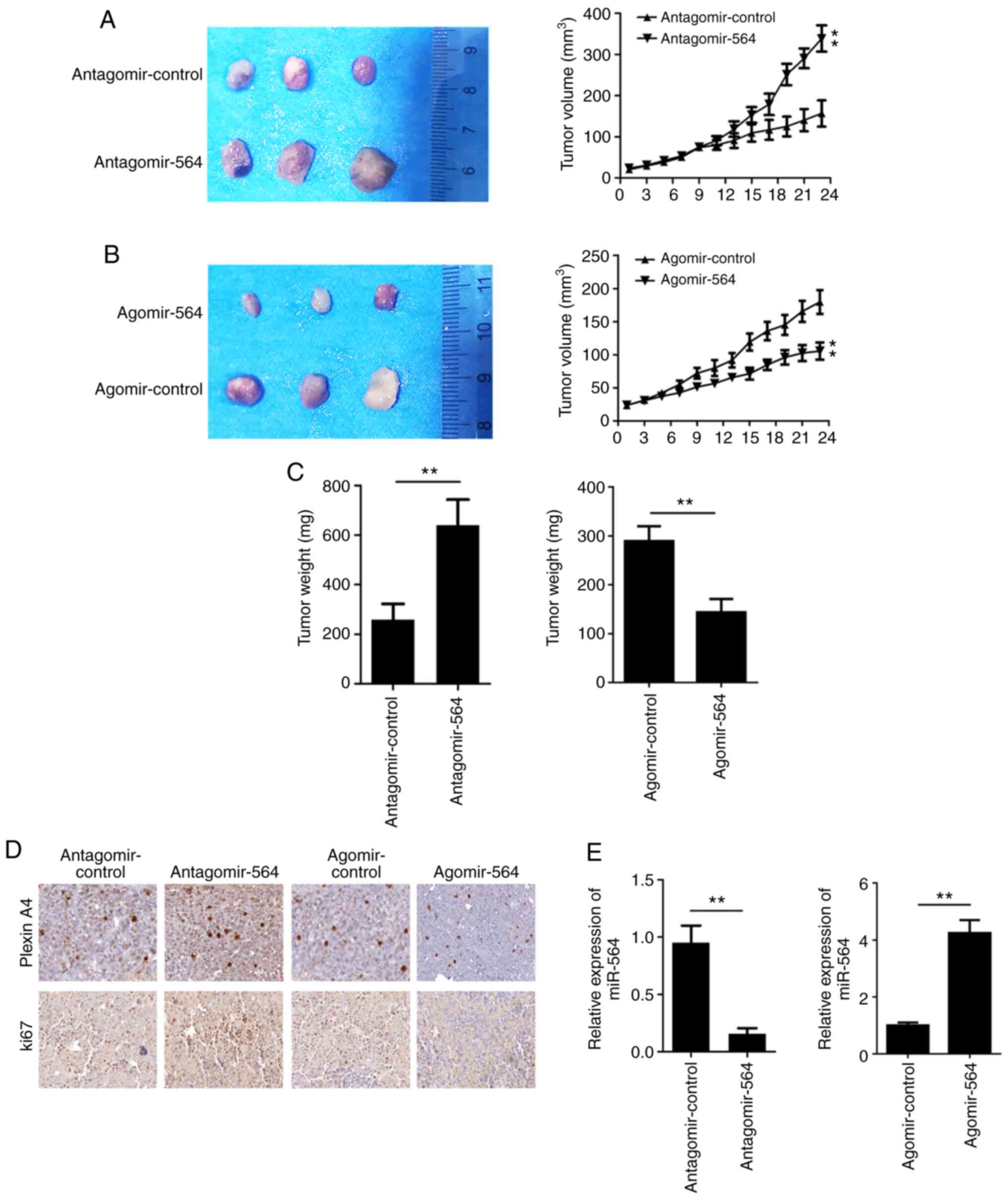|
1
|
Zhang X, Xiong Y, Xia Q, Wu F, Liu L, Zhou
Y, Zeng L, Zhou C, Xia C, Jiang W, et al: Efficacy and safety of
apatinib plus vinorelbine in patients with wild-type advanced
non-small cell lung cancer after second-line treatment failure: A
nonrandomized clinical trial. JAMA Netw Open.
3(e201226)2020.PubMed/NCBI View Article : Google Scholar
|
|
2
|
Innos K, Oselin K, Laisaar T and Aareleid
T: Patterns of survival and surgical treatment in lung cancer
patients in Estonia by histologic type and stage, 1996-2016. Acta
Oncol. 58:1549–1556. 2019.PubMed/NCBI View Article : Google Scholar
|
|
3
|
Zare A, Ganji M, Omrani MD, Alipoor B and
Ghaedi H: Gastric cancer MicroRNAs Meta-signature. Int J Mol Cell
Med. 8:94–102. 2019.PubMed/NCBI View Article : Google Scholar
|
|
4
|
Mohr AM and Mott JL: Overview of microRNA
biology. Semin Liver Dis. 35:3–11. 2015.PubMed/NCBI View Article : Google Scholar
|
|
5
|
Jafari N and Abediankenari S: MicroRNA-34
dysregulation in gastric cancer and gastric cancer stem cell.
Tumour Biol. 39(1010428317701652)2017.PubMed/NCBI View Article : Google Scholar
|
|
6
|
Kanchan RK, Siddiqui JA, Mahapatra S,
Batra SK and Nasser MW: microRNAs orchestrate pathophysiology of
breast cancer brain metastasis: Advances in therapy. Mol Cancer.
19(29)2020.PubMed/NCBI View Article : Google Scholar
|
|
7
|
Gon Y, Shimizu T, Mizumura K, Maruoka S
and Hikichi M: Molecular techniques for respiratory diseases:
MicroRNA and extracellular vesicles. Respirology. 25:149–160.
2020.PubMed/NCBI View Article : Google Scholar
|
|
8
|
Liang C, Xu Y, Ge H, Xing B, Li G, Li G
and Wu J: miR-564 inhibits hepatocellular carcinoma cell
proliferation and invasion by targeting the GRB2-ERK1/2-AKT axis.
Oncotarget. 8:107543–107557. 2017.PubMed/NCBI View Article : Google Scholar
|
|
9
|
Ru N, Zhang F, Liang J, Du Y, Wu W, Wang F
and Liu X: MiR-564 is down-regulated in osteosarcoma and inhibits
the proliferation of osteosarcoma cells via targeting Akt. Gene.
645:163–169. 2018.PubMed/NCBI View Article : Google Scholar
|
|
10
|
Meng FJ, Meng FM, Wu HX and Cao XF:
miR-564 inhibited metastasis and proliferation of prostate cancer
by targeting MLLT3. Eur Rev Med Pharmacol Sci. 21:4828–4834.
2017.PubMed/NCBI
|
|
11
|
Guo Y, Qi Y, Guo A, Du C, Zhang R and Chu
X: miR-564 is downregulated in gastric carcinoma and targets E2F3.
Oncol Lett. 13:4155–4160. 2017.PubMed/NCBI View Article : Google Scholar
|
|
12
|
Jiang C, Shen F, Du J, Hu Z, Li X, Su J,
Wang X and Huang X: MicroRNA-564 is downregulated in glioblastoma
and inhibited proliferation and invasion of glioblastoma cells by
targeting TGF-β1. Oncotarget. 7:56200–56208. 2016.PubMed/NCBI View Article : Google Scholar
|
|
13
|
Tran TS, Kolodkin AL and Bharadwaj R:
Semaphorin regulation of cellular morphology. Annu Rev Cell Dev
Biol. 23:263–292. 2007.PubMed/NCBI View Article : Google Scholar
|
|
14
|
Matsuoka RL, Nguyen-Ba-Charvet KT, Parray
A, Badea TC, Chedotal A and Kolodkin AL: Transmembrane semaphorin
signalling controls laminar stratification in the mammalian retina.
Nature. 470:259–263. 2011.PubMed/NCBI View Article : Google Scholar
|
|
15
|
Mauti O, Domaniskaya E, Andermatt I, Sadhu
R and Stoeckli ET: Semaphorin6A acts as a gate keeper between the
central and the peripheral nervous system. Neural Dev.
2(28)2007.PubMed/NCBI View Article : Google Scholar
|
|
16
|
Catalano A, Lazzarini R, Di Nuzzo S,
Orciari S and Procopio A: The plexin-A1 receptor activates vascular
endothelial growth factor-receptor 2 and nuclear factor-kappaB to
mediate survival and anchorage-independent growth of malignant
mesothelioma cells. Cancer Res. 69:1485–1493. 2009.PubMed/NCBI View Article : Google Scholar
|
|
17
|
Yamamoto M, Suzuki K, Okuno T, Ogata T,
Takegahara N, Takamatsu H, Mizui M, Taniguchi M, Chédotal A, Suto
F, et al: Plexin-A4 negatively regulates T lymphocyte responses.
Int Immunol. 20:413–420. 2008.PubMed/NCBI View Article : Google Scholar
|
|
18
|
Kigel B, Rabinowicz N, Varshavsky A,
Kessler O and Neufeld G: Plexin-A4 promotes tumor progression and
tumor angiogenesis by enhancement of VEGF and bFGF signaling.
Blood. 118:4285–4296. 2011.PubMed/NCBI View Article : Google Scholar
|
|
19
|
Livak KJ and Schmittgen TD: Analysis of
relative gene expression data using real-time quantitative PCR and
the 2(-Delta Delta C(T)) method. Methods. 25:402–408.
2001.PubMed/NCBI View Article : Google Scholar
|
|
20
|
Yang B, Jia L, Guo Q, Ren H, Hu D, Zhou X,
Ren Q, Hu Y and Xie T: MiR-564 functions as a tumor suppressor in
human lung cancer by targeting ZIC3. Biochem Biophys Res Commun.
467:690–966. 2015.PubMed/NCBI View Article : Google Scholar
|
|
21
|
Wang H, Chao K, Ng SC, Bai AH, Yu Q, Yu J,
Li M, Cui Y, Chen M, Hu JF and Zhang S: Pro-inflammatory miR-223
mediates the cross-talk between the IL23 pathway and the intestinal
barrier in inflammatory bowel disease. Genome Biol.
17(58)2016.PubMed/NCBI View Article : Google Scholar
|
|
22
|
Wu Y, Heinrichs J, Bastian D, Fu J, Nguyen
H, Schutt S, Liu Y, Jin J, Liu C, Li QJ, et al: MicroRNA-17-92
controls T-cell responses in graft-versus-host disease and leukemia
relapse in mice. Blood. 126:1314–1323. 2015.PubMed/NCBI View Article : Google Scholar
|
|
23
|
Whipple AJ, Breton-Provencher V, Jacobs
HN, Chitta UK, Sur M and Sharp PA: Imprinted maternally expressed
microRNAs antagonize paternally driven gene programs in neurons.
Mol Cell. 78:85–95.e8. 2020.PubMed/NCBI View Article : Google Scholar
|
|
24
|
Basak A, Munschauer M, Lareau CA,
Montbleau KE, Ulirsch JC, Hartigan CR, Schenone M, Lian J, Wang Y,
Huang Y, et al: Control of human hemoglobin switching by
LIN28B-mediated regulation of BCL11A translation. Nat Genet.
52:138–145. 2020.PubMed/NCBI View Article : Google Scholar
|
|
25
|
Xiao L, Tang T, Huang Y and Guo J: MiR-564
promotes hypertrophic scar formation through TGF-β1 upregulation. G
Ital Dermatol Venereol. 154:186–191. 2019.PubMed/NCBI View Article : Google Scholar
|
|
26
|
Song Z, Yang H, Wu X, Kong C and Xu C:
microRNA-564 inhibits the aggressive phenotypes of papillary
thyroid cancer by directly targeting astrocyte-elevated gene-1.
Onco Targets Ther. 12:4869–4881. 2019.PubMed/NCBI View Article : Google Scholar
|
|
27
|
Casazza A, Laoui D, Wenes M, Rizzolio S,
Bassani N, Mambretti M, Deschoemaeker S, Van Ginderachter JA,
Tamagnone L and Mazzone M: Impeding macrophage entry into hypoxic
tumor areas by Sema3A/Nrp1 signaling blockade inhibits angiogenesis
and restores antitumor immunity. Cancer Cell. 24:695–709.
2013.PubMed/NCBI View Article : Google Scholar
|
|
28
|
He Z and Tessier-Lavigne M: Neuropilin is
a receptor for the axonal chemorepellent Semaphorin III. Cell.
90:739–751. 1997.PubMed/NCBI View Article : Google Scholar
|
|
29
|
Podojil JR, Chiang MY, Ifergan I, Copeland
R, Liu LN, Maloveste S, Langermann S, Liebenson D, Balabanov R, Chi
H, et al: B7-H4 modulates regulatory CD4(+) T Cell induction and
function via ligation of a semaphorin 3a/Plexin A4/Neuropilin-1
complex. J Immunol. 201:897–907. 2018.PubMed/NCBI View Article : Google Scholar
|



